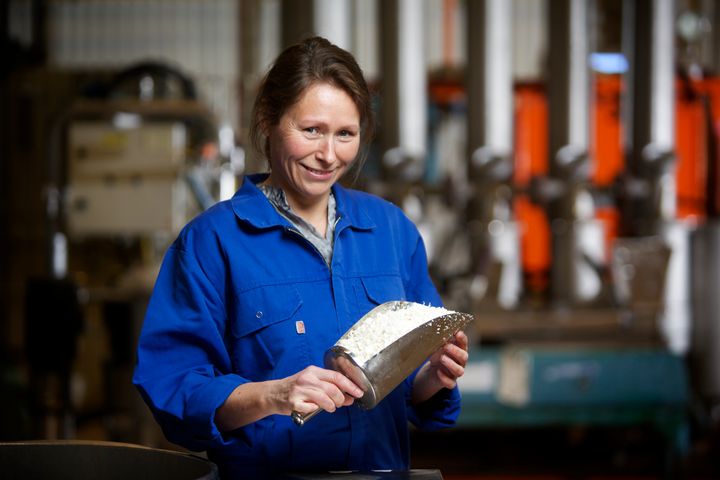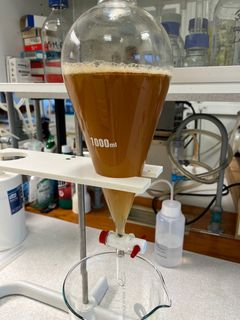Deep-sea mesopelagic fish offer health benefits
Researchers at Nofima, in collaboration with other European research institutions in Irland and Spain, have made new discoveries in the exploration of deep-sea fish. The study was recently published in a renowned scientific journal.

The results show that deep-sea mesopelagic fish species such as hatchetfish and lanternfish could be a source of new medicines and health-promoting ingredients. These underutilised fish species may contain unique substances that could be beneficial for our health.
This study generated bioactive hydrolysates (which are proteins split into peptides) using an enzyme and natural autolysis from deep-sea fish. The scientists then investigated if the hydrolysates could have biological effects by using “in vitro bioassays” to reveal potential bioactivity, and thereafter identified the bioactive peptides by using advanced “mass spectrometry” methods.
The study has identified special protein fragments in deep-sea fish which may have anti-inflammatory properties. These small peptides could potentially be used to create new medicines for pain and chronic inflammatory conditions. The substances also have the potential to positively influence blood pressure and blood sugar levels.
Additionally, some of the peptides have been found to have an 'umami' taste, which is the fifth basic taste and is described as 'meaty' and 'savoury'. For food producers, substances that provide a rich flavour could be particularly interesting for improving taste of products. It's already known that various marine species can provide umami flavour. An example of this is tunicates, often called sea squirts.
"These are exciting findings that show that deep-sea fish can also be a source of healthy bioactive ingredients," says Sissel Albrektsen, senior researcher at Nofima and co-author of the study.
Also good in salmon feed
It has recently been shown that fishmeal and silage produced from deep-sea mesopelagic fish also support efficient growth when used as protein and fat-rich ingredients in feed for salmon. Fishmeal from hatchetfish contained high levels of valuable fatty acids and phospholipids that demonstrated positive health effects in the salmon intestine.
In that particular study, small salmon in tanks were fed with feed where varying proportions of fish meal from blue whiting had been replaced with either meal or silage from mesopelagic fish.
“The salmon grew very well and had a good appetite for all the feeds. It was a very good experiment where we had to stop the trial one week before planned, because of the high growth rate in fish ”, says Sissel Albrektsen, who has led the experiments in the projects. Fish fed mesopelagic meal and silage showed similar high growth as fish fed the conventional blue whiting fish meal.
The researchers' new findings could be good news for the Norwegian fishing industry. Deep-sea fish are an underutilised resource, and this research indicates the potential for creating new products and markets. In the long term, this could lead to increased value creation and new jobs along the coast.
The research is part of the Meeso project in the EU's Horizon 2020 program and SFI Harvest in the Norwegian Research Council and is a good example of how marine resources can be utilized in a sustainable way. By finding new uses for deep-sea mesopelagic fish, the pressure on traditional fish stocks can be reduced.
Still challenges to solve
The species included in the experiments are hatchetfish and lanternfish. Hatchetfish is a small silvery fish that grows up to seven centimetres. There are several species of lanternfish, and they vary in length. The most common species along the Norwegian coast is the Northern lanternfish, which grows up to 11 centimetres.
Both hatchetfish and lanternfish are defined as deep-sea fish, or mesopelagic species that live at ocean depths between 200 and 1000 metres. In total, there are 250 different mesopelagic species. The volume of these species is uncertain but estimates range between 600 and several thousand million tonnes – which is much more than the world's annual wild fish catch.
Although the results are promising, there are still some challenges related to mapping stocks, locating where the deep-sea fish are, as well as challenges with capture, raw material handling and preservation that need to be solved to realise a commercially sustainable fishery of mesopelagic fish.
Contacts
Morgan Lillegård
Tel:+47 416 10 130Morgan.Lillegard@nofima.noReidun Lilleholt Kraugerud
Tel:48197382reidun.lilleholt@nofima.noSissel Albrektsen
Tel:+47 55 50 12 04sissel.albrektsen@nofima.noImages
Links
About Nofima
The Norwegian food research institute Nofima provides research based knowledge and innovations for actors in all parts of the food systems.

Subscribe to releases from Nofima
Subscribe to all the latest releases from Nofima by registering your e-mail address below. You can unsubscribe at any time.
Latest releases from Nofima
Three months shorter production time11.12.2025 07:00:00 CET | Press release
Selective breeding is a powerful tool to enhance desirable traits in fish and livestock - a fact well established in the industry. Now Manila clam has its own dedicated breeding programme.
Tre måneder kortere produksjonstid11.12.2025 07:00:00 CET | Pressemelding
At avl er et kraftfullt verktøy for å få fremgang i egenskaper man ønsker hos fisk og dyr, er kjent. Nå har teppeskjell fått sitt eget avlsprogram.
Potential for land based red algae25.11.2025 10:39:15 CET | Press release
How could Norway produce more food, utilise high nutrient levels in discharge water and create new businesses?
Potensiale for landbasert rødalge25.11.2025 07:00:00 CET | Pressemelding
Hvordan kan Norge produsere mer mat, rense utslippsvann og skape nye arbeidsplasser?
Norsk sjømatnæring: Nå er ringvirkningene større enn kjernevirksomheten13.11.2025 14:00:00 CET | Pressemelding
Ringvirkningene er nå større enn kjernevirksomheten i sjømatnæringen. Verdiskapingen i sjømatnæringens kjernevirksomhet utgjorde 69 milliarder kroner i 2024, mens ringvirkningene var nesten 70 milliarder.
In our pressroom you can read all our latest releases, find our press contacts, images, documents and other relevant information about us.
Visit our pressroom

